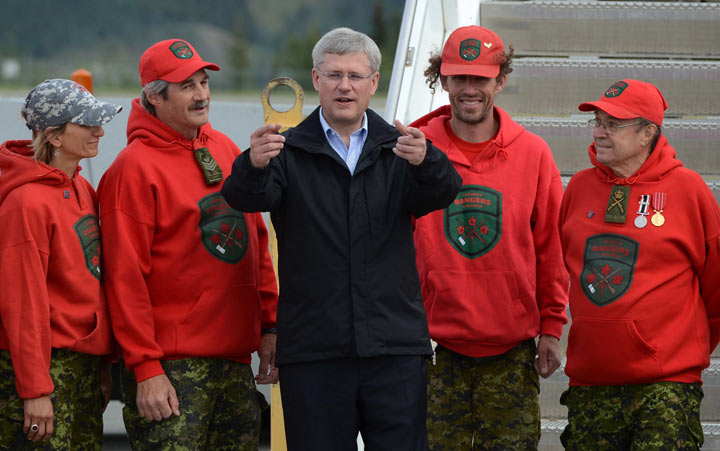TORONTO – As Prime Minister Stephen Harper begins his eighth annual Arctic tour he’ll meet with the Canadian Rangers responsible for patrolling Nunavut, Yukon Territory, and Northwest Territories.

Their motto is “Vigilans,” translated as “The Watchers,” the Canadian Rangers are the eyes and ears of the Canadian military in the remote northern and isolated areas of Canada.
Consisting of approximately 5000 members and speaking 26 different languages and dialects, the Canadian Rangers are a part of the Canadian Forces responsible for conducting national security, and search and rescue missions in areas of Canada not easily reached.
The Rangers are divided into five patrol groups responsible for different sections of the country.
Their duties include surveillance patrols, collecting info for the military and supporting in search and rescue operations in 200 communities across the country.
The origin of the Rangers dates back to March 1942, when they began as the Pacific Coast Militia Rangers (PCMR) in the middle of the Second World War, according to the Prince of Whales Northern Heritage Centre.
As volunteer soldiers, their first objective was to guard Yukon and B.C. coastlines against the threat of a possible Japanese invasion.
In 1945, the PCMR officially stood down and two years later the Canadian Rangers took over the responsibility of Arctic surveillance.
The Rangers still act as a volunteer force and are only paid when in training or on special missions.
While the mission of the Rangers is to provide “lightly equipped, self sufficient, mobile forces,” transportation has become an issue for the Arctic reserve forces.
The Canadian Press is reporting that National Defence has struggled to equip Arctic forces with snowmobiles, in some cases asking forces to continue to use all-terrain vehicles from the 1980s.
Meanwhile Canadian forces have been secretly testing a $620,000 stealth snowmobile to silently carry troops across Canada’s frozen north.
Currently the Canadian Forces are looking for several small vehicles as part of a northern “mobility project.”
Harper arrived in Whitehorse on Sunday and will spend six days touring the north.




Comments